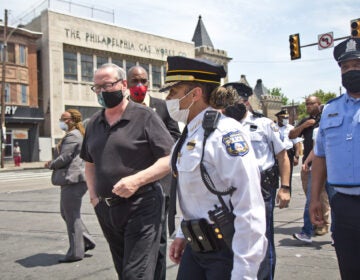Two keys to getting the land bank right

Seeing the land bank bill passed by City Council’s Public Property & Public Works Committee on Monday was a huge step forward for those who believe the city’s current processes for vacant property disposition is broken. The hope is that a land bank would make the disposition of vacant publicly-owned properties more transparent, predictable, and intentional. It would remove confusing layers of bureaucracy, clarify ownership and clean titles, create an efficient and thoughtful framework for making decisions about vacant city-owned property, and add new levels of accountability.
But if transparency is a goal of the would-be Philadelphia Land Bank, the hearing Monday was not a great start.
A diverse cast of advocates testified passionately in favor of a land bank before a committee of council members, even as amendments to the land bank legislation were being negotiated behind closed doors. If this is at all a metaphor for what’s to come, we’re in trouble.
Some amendments ahead are technical changes brought forward by the Law Department. But several important provisions of the land bank bill, including the approvals required for property transfers and accountability measures, are still being debated.
Land is power. After Monday’s hearing two things stand out as key to make sure that the power shifts that come with the Land Bank do not simply result in a new system that is once again impenetrable and inequitable:
Ditch the Vacant Property Review Committee
As PlanPhilly’s Jared Brey reports, one amendment added at the behest of Council President Darrell Clarke requires approvals from the inter-agency Vacant Property Review Committee (VPRC) and City Council. Say the Land Bank board approves a property transfer, then VPRC would need to approve it too, followed by a resolution voted on at City Council.
But VPRC approval adds an unnecessary layer of bureaucracy that could prove another place to bottleneck the flow of vacant properties into new hands. VPRC approval could just be another stumbling block where perfectly good proposals go to die. This step alone could render the Land Bank inefficient and cumbersome by adding time and cost. City Council’s approval already builds in delays due to their limited schedule.
If the strategic plan has specific, clear goals and the Land Bank has a strong board and capable staff, adding an additional hurdle for approval makes little sense.
Make the strategic plan real
Representatives of the Nutter administration took issue with some language included in the bill about the required strategic plan. This is an extremely important piece to get right.
A plan for city-owned vacant property with clear priorities, as Councilman Bill Green remarked during the hearing, would ensure greater accountability.
A strategic plan for the Land Bank should be like any other created for the city: publicly debated, professionally developed. In this case that means the involvement of the City Planning Commission.
As part of the city’s comprehensive planning process and adaptation to the new zoning code, the City Planning Commission is thinking about vacant property. The city’s zoning map is being updated already and now may be the perfect time to develop recommendations for appropriate new uses for publicly-owned vacant properties in each district. Why not use zoning remapping to inform the Land Bank’s strategic plan? It seems like the right time to think holistically about neighborhood change, vacant land conversions, and what kinds of new uses make the most sense in different areas of the city.
Ideally the strategic plan would lay out clear priorities for vacant land uses in each councilmanic district. Council and city agencies would have input in developing this plan, as would the public. This would give the Land Bank Board a foundation for decision-making, offer would-be owners a sense of predictability, and offer city council members good reasons for the decisions they will have to make at Council.
A strategic plan could drill down to be a parcel-by-parcel opportunity to evaluate the properties that would come into the land bank. Or it could be as simple as identifying zones that would be most appropriate for development, side yards, gardens, or affordable housing in the coming years. But the goal would be the same: Make the disposition of city owned vacant land less about transactional, isolated decisions in favor of a more thoughtful and deliberate approach.
WHYY is your source for fact-based, in-depth journalism and information. As a nonprofit organization, we rely on financial support from readers like you. Please give today.







